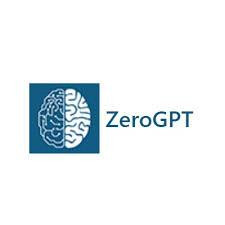Strategies for Detecting AI-Generated Text
In an era where digital content is abundant, ensuring its authenticity is paramount. With the proliferation of AI-driven text generation models like ChatGPT, distinguishing between human and machine-generated content has become increasingly challenging. However, innovative tools such as ChatGPT Checker, Content Detector, and AI Detection systems are revolutionizing the way we identify AI influence in online content.
The Rise of AI-Generated Content
AI-generated content has permeated various online platforms, from social media interactions to news articles and customer service chats. These advancements in AI technology have enabled the creation of text that closely resembles human writing, blurring the lines between authentic and AI-generated content. As a result, discerning the origin of online content has become a formidable challenge in the digital age.
Challenges in Detecting AI Influence
Detecting AI influence in online content poses significant challenges due to the nuanced nature of AI language models. Conventional methods such as keyword analysis and grammar checks are often inadequate in distinguishing between human and AI-generated text. Furthermore, AI-generated content can exhibit subtle linguistic nuances and contextually appropriate responses, making it challenging to identify through manual scrutiny alone.
Innovative Tools for Detection
Several innovative tools have emerged to aid in the detection of AI-generated content. ChatGPT Checker and AI Detection systems utilize advanced algorithms to analyze text samples and identify patterns indicative of AI involvement. Additionally, Content Detectors leverage machine learning techniques to flag potential instances of AI-generated text, providing users with valuable insights into the authenticity of online content.
Strategies for Effective Detection
Implementing effective strategies is crucial for accurately identifying AI-generated content. Combining automated detection tools with human review processes can enhance detection accuracy and reliability. Furthermore, comparing text samples against known AI-generated content databases and conducting linguistic analysis can help uncover subtle indications of AI involvement.
Applications in Various Contexts
The ability to detect AI-generated content has significant implications across various domains. In academia, tools like Check If AI Wrote This and AI Detector Plagiarism can help educators uphold academic integrity by identifying instances of AI-generated content in student submissions. Similarly, in professional settings, platforms like Detection ChatGPT and Detector ChatGPT can verify the authenticity of messages and emails, ensuring credibility in business communication.
Ethical Considerations and Future Directions
Ethical considerations are paramount in the development and deployment of AI detection tools. Transparency, accountability, and user privacy protection must be prioritized to ensure responsible usage of these tools. Additionally, ongoing research and collaboration are essential for advancing detection methodologies and addressing emerging challenges in AI-generated content detection.
Conclusion: Fostering Trust in Online Discourse
As AI-driven content continues to proliferate online, detecting and mitigating its influence is crucial for upholding authenticity and trustworthiness. By leveraging innovative detection tools and implementing effective strategies, individuals and organizations can navigate the digital landscape with confidence, knowing that their interactions are genuine and trustworthy. Together, we can foster a digital environment where authenticity reigns supreme, ensuring meaningful and trustworthy communication for all.

Comments
Post a Comment